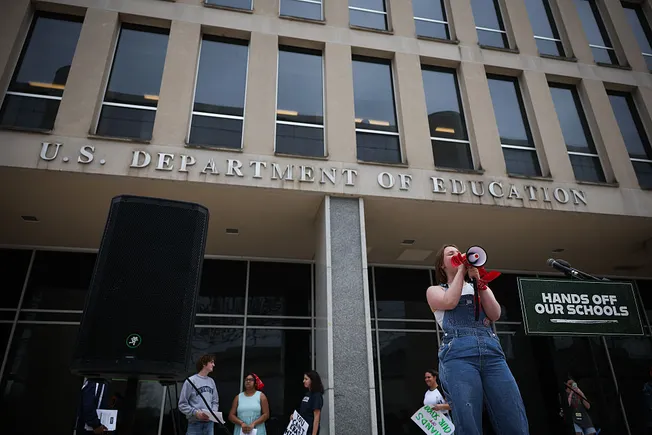As the global education landscape evolves, understanding what motivates international students has never been more critical. NCUK’s annual student survey series, Transforming Student Futures, provides essential insights into the aspirations of approximately 1,000 international students from 88 countries participating in NCUK’s in-country pathway programmes worldwide.
The latest findings reveal clear patterns in student priorities that demand attention from educators, policymakers, and universities.
Maintaining quality and reputation is key
Quality of education stands as the decisive factor for international students, with 69.9% of respondents selecting it as their primary motivation for pursuing overseas qualifications, up from 58% in 2024. Career-focused motivations follow closely, with over half of students (56.4%) motivated by career development opportunities, including increased employability and monetary benefits.
This emphasis on educational excellence is particularly pronounced among students from Nigeria, Pakistan, Myanmar, and Peru, where quality ranks as the top motivation. In Kenya, quality shares the top position with career development, while in Ghana, it ties with gaining new knowledge as the primary driver.
Interestingly, students from China present a unique pattern, with gaining new knowledge emerging as their main motivation rather than quality alone, suggesting different educational priorities for NCUK students across source markets.
The rise of TNE and changing learning preferences
Traditional learning models continue to dominate student preferences, with 66% favouring fully on-campus learning experiences. However, the survey indicates growing consideration for online provision as an increasingly viable alternative, reflecting evolving attitudes toward flexible education delivery.
The year-on-year increases in demand for full online learning (up from 10% to 22%), full on-campus learning at a local institution in the students home country (up from 16% to 32%) and full on-campus learning but half taught at a branch campus in the student’s home country and half taught at a main campus overseas (up from 14% to 20%) all signal a move toward flexibility.
This shift aligns with the recent growth of TNE, and NCUK’s in-country model and diverse qualification offerings cater to this demand, enabling students to access global education without relocating immediately.
Is it worth us considering whether, as a sector, we sometimes place too much emphasis on policy change?
The high confidence level in NCUK pathways – with 94% of students believing these programs will enhance their career prospects (a 5% year-on-year increase) – demonstrates strong programme satisfaction and perceived value among participants.
Policy changes: The US coming up Trumps but overall, NCUK students unaffected by policy changes
In 2025, 52% of respondents expressed concern about UK visa restrictions, up from 38% in 2024, reflecting recent tightening of post-study work policies. Conversely, the USA saw a 12% rise in positive sentiment (to 29%) due to perceived stability in immigration rules, while Australia’s appeal dipped 8% (to 22%) amid cost-of-living concerns.
These shifts highlight a nuanced landscape: students from Ghana and Pakistan are more deterred by UK policy changes, while Nigerian students remain optimistic about the USA. However, the overall message here is that NCUK students’ decision making does not seem significantly influenced by policy changes, with 80% of respondents choosing the UK as their preferred destination, despite the above findings.
Is it worth us considering whether, as a sector, we sometimes place too much emphasis on policy change?
Implications for the future
The emphasis on quality demands continued investment in academic excellence and institutional reputation to meet rising student expectations, particularly in competitive source markets like Nigeria. And further, expanding TNE and hybrid learning options will cater to students seeking quality education with flexibility, reducing reliance on traditional study-abroad models.
NCUK’s in-country pathway programmes demonstrate strong alignment with student needs and aspirations, offering the academic preparation, university access to high-ranking institutions, and career development support that international students prioritise. As the education sector continues to evolve, maintaining focus on quality, flexibility, and comprehensive student support will remain essential for meeting the diverse and changing needs of international students.

About the author: Andy Howells is the Chief Marketing Officer for NCUK, a leading global pathway provider. He has worked in higher education for over 15 years in senior marketing and student recruitment roles at Royal Holloway, University of London, the University of Southampton and most recently, Universities UK International (UUKi).
Andy has won several awards, including ‘Best Issues and Crisis Campaign’ at the PR Week Global awards in 2022 for UUKi’s We Are Together campaign, and ‘Marketing Campaign of the Year’ at the PIEoneer Awards in 2023 for UUKi’s Twin for Hope campaign. In 2023, Andy led the relaunch of the UK higher education sectors, #WeAreInternational campaign.
Andy is a father of two young children and his claim to fame is delivering his second child himself, in his car, in a supermarket car park during the first weeks of Covid lockdowns!





